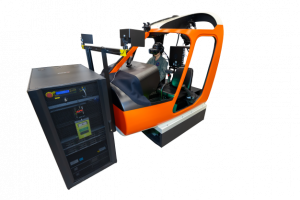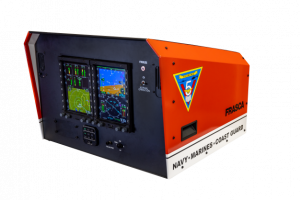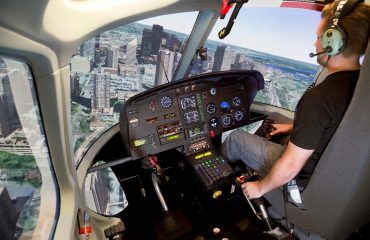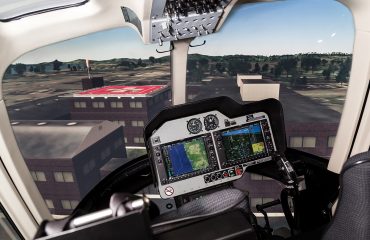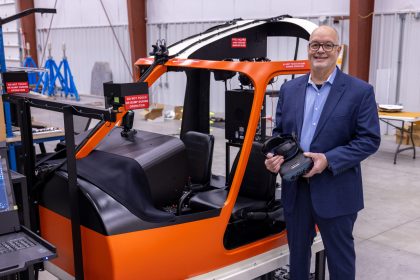
MILTON, Florida (May 17, 2023) — Since 2021, Department of Defense personnel and contractors at Naval Air Station Whiting Field in Milton, Florida, have worked to design TH-73A Part Task Trainers (PTT) and Desktop Avionics Trainers (DAT) in an effort to modernize the installation’s pilot training program to reflect aviation assets in the current Navy, Marine Corps and Coast Guard inventory.
The TH-73A PTT is a self-paced, low-cost training solution that aims to better equip student pilots with the basics of helicopter aviation. The system is set to replace the 36-year-old TH-57B/TH-57C Sea Ranger fleet and serve as a complement for more costly training environments, like high-end Level Six and Seven simulators and in-flight sorties.
Specifications of the TH-73A PTT are a first-of-its-kind in the flight simulator industry, offering mixed reality, dual pilot/co-pilot operation and multi-ship formation flight in a physically compact configuration.
Charged with constructing simulator hardware and flight, engine and systems model performance, FRASCA International Inc. structured the blueprint for the system’s dual-seat and compact design for Booz Allen.
“FRASCA is working to install eight new TH-73A Flight Training Devices (FTDs) and modifying the 10 existing TH-57B/C models to better reflect the Navy’s TH-73A aircraft,” said Randy Gawenda, business development manager at FRASCA. “FRASCA’s mission here is to build a training ecosystem that will guide students from familiarization to being proficient and ready to take on more advanced training scenarios.”
“Aechelon’s mixed reality seamlessly blends tactile components of the cockpit, like the knobs, pedals and other individuals in the cockpit, within a high-fidelity virtual world, which supports the same extreme 3D high-density databases in use on the highest-end simulators,” said Javier Castellar, Chief Strategy Officer at Aechelon Technology Inc. “Most notably, because of the support of fully simulated Night Vision Goggles (NVG) on a mixed reality environment combined with the stereo camera processing and merging between real-world and virtual in day and night, students can more effectively train muscle memory, so it becomes second nature when the time comes to fly.”
According to project leaders, harnessing modern technology to create the TH-73A PTT will directly result in a more mission-ready warfighter able to quickly transition to their operational rotary-wing/tilt-wing platforms after graduating Training Wing Five’s course of instruction.
“Because the TH-73A PTT was built to have a smaller footprint than traditional Flight Training Devices, it’s more cost-effective to manufacture,” said Gawenda. “A smaller system also allows more devices to be operated at once and exponentially more students to gain the experience they need to become fully operational pilots as soon as possible.”
In addition to modernizing training resources, the teamwork involved in designing the TH-73A PTT is paving a new standard for flight training simulation.
“Even though the simulator’s virtual components were formed around the TH-73A, the general framework can be repurposed to create other simulators for other airframes and any advanced sensor suite configurations,” said Castellar. “Everyone on this program has a hand in pioneering a new era in mixed reality simulators, and it’s absolutely monumental.”
The first units of the TH-73A PTT and DAT fleet are currently being delivered to NAS Whiting, with the complete shipment set to be fulfilled in 2023.

